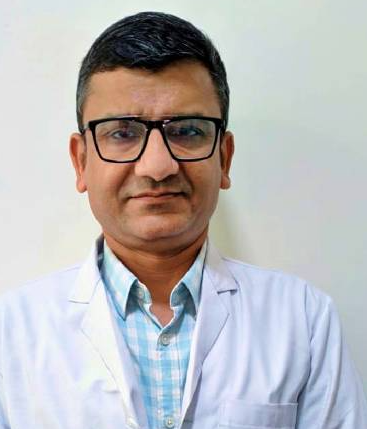Hair Transplant Infection - Signs, Risks, Preventions & Treatment

Quick Summary
Hair Transplant Infections
Hair transplant is a common technique performed for the restoration of hair. Hair transplant infections are one of the most common complications that are relatively rare and affect 1% of people who undergo a hair transplant.
- The most common hair transplant infection is folliculitis, which is an inflammation of the hair follicles.
- Other hair transplant infections include cellulitis, impetigo, and erysipelas.
- The key signs and symptoms of hair transplant infections include redness, swelling, pain, and drainage from the affected area.
- Hair transplant infections can be prevented by following good hygiene practices, taking antibiotics, and using a sterile dressing on the incision site.
Hair transplants are widely believed to be a safe procedure. However, every surgical procedure comes with its own risks. Hair transplant infections are one of the most common complications that are relatively rare and affect 1% of people who undergo a hair transplant. Let us understand the common hair transplant infection, their key signs and symptoms and how they can be prevented.
How do Infections Occur after a Hair Transplant?
Hair transplant infections may induce general body symptoms, including
- Swelling and discomfort
- Discolouration or redness that doesn't disappear after a few minutes
- Pus drainage from the donor or transplanted sites
- Development of scabs and crusts
- Severe itching or burning
- Fever
- Swollen lymph nodes
- Nausea
- Headache
- Vomiting


Causes of Hair Transplant Infection
- Unhygienic conditions
Unsanitary conditions before, during, and after hair restoration surgery account for most infections. It's a common sign of uncleanliness at either the donor's or the receiver's location. - Excessive scabbing
Scabs and crusts develop after a hair transplant procedure because the blood has dried up and the transplanted tissue has died. - Weak immune system
The risk of becoming sick is higher if there is a compromised immune system due to a medical condition such as cancer or HIV. Changes in the immune system, which governs a person's body's defensive mechanisms, may make cancer patients more susceptible to hair transplant infections.
It is not recommended to do a hair transplant procedure on an HIV patient as the patients are more prone to hair transplant infections due to low immunity. Also, the doctor or medical staff might get the infection. - Smoking
There might be a greater chance of hair transplant infection if one smokes cigarettes as smoking reduces the blood flow and slows down the recovery process. - High blood pressure
People who are hypertensives are more prone to infection after hair transplant as the blood circulation of people with high blood pressure is considerably stronger. This can lead to the spread of the pathogens to other hair follicles. - Obesity
High cholesterol levels in obese people may indirectly harm a person's hair. Blood vessels provide hair with the nourishment it needs. Thus, occlusion due to high cholesterol levels on the inner surface of arteries, veins, and capillaries, might cause hair transplant infections. - Diabetes
Patients with Type 1 diabetes must inject insulin to satisfy their daily demands as they are more prone to hair transplant infections. - Malnutrition
Weight loss, reduced immunity, and impeded growth are all consequences of malnutrition, making the person more susceptible to hair transplant infections.
Complications of Hair Transplant Infection
- Folliculitis (hair follicle swelling and inflammation)
Hair follicle inflammation is often brought on by a bacterial infection, also known as bacterial folliculitis. Folliculitis is a frequent hair transplant donor area infection and presents as red pimples around the follicles a few weeks or months following surgery.
Sterile folliculitis refers to folliculitis that does not include an infection.
A therapy to minimise inflammation and, if required, antibiotics for fighting the infection may be suggested. Talk to the hair restoration specialists if any symptoms of folliculitis are present. - Neurological damage
Injuries to the spinal cord or other nerves during strip harvesting might cause neurological damage. Coagulating the blood vessels can also hurt some nerves. - Necrosis or destruction of tissue
Severe infections may cause tissue destruction, known as necrosis. Ischemia is a disease in which blood flow is reduced to certain places of the body, and infection increases the likelihood of this happening.
Necrotic tissue of hair transplant infection on the scalp looks dark and leathery. The afflicted tissue may need to be surgically removed because of the permanent nature of this illness.
Those who have had a hair transplant should notify their surgeons if they have any acute localised discomfort on the transplanted area of the scalp. - Recipient tissue necrosis or death of tissue
Recipient tissue necrosis is far less common. The skin becomes a greyish tone, then crusts over and forms an eschar. Eschar falls off, revealing a scarred area.
Preventive Measures for Infection after a Hair Transplant
The following are some simple tips that may aid in preventing infections after a hair transplant:
- Putting off workouts
For at least a few days after surgery, or until the surgeon gives the go-ahead, the patients should refrain from engaging in intense activities that cause heavy perspiration during this period since this creates an ideal environment for germs and viruses to flourish in the treated region. This may raise the risk of infection and lead to unintended complications that might compromise the outcome. - Take medicines regularly
After the surgery, the patients are often administered painkillers and antibiotics to lessen the risk of infection. Patients should take all their prescribed medications as directed to ensure a speedy and safe recovery. - Never scrape the incision area
Crusts and scabs form on the transplanted region as the wound begins to heal. Itching and a desire to scratch the scalp may result from the scabbing or crusting that has formed. But one should avoid touching the scalp, particularly the incisions, as this may spread infection and cause the transplanted hair follicles to get dislodged. - Wash the scalp regularly
Patients must not wash their hair for a minimum of 24 hours following the procedure. After three to four days, they may return to their usual bathing routine. Most patients are given a medicated shampoo that they are expected to use two weeks following surgery. - Maintain hygiene
Cleanliness is paramount to reducing the likelihood of contracting an infection, particularly after hair transplant surgery. The recovery phase should avoid touching their scalps with dirty hands to avoid hair transplant infections. - Keep an eye on the recovery process
Keeping close tabs on recovery following a hair transplant is essential, as is checking in on the treatment area regularly. Notice the signs and notice when it heals. If it’s taking too long, contact the doctor immediately.
Takeaway
Look for a surgeon that has performed similar procedures before. At HexaHealth, we have an excellent team of experienced doctors performing hair transplantation. Click here to book a consultation call right away!
Frequently Asked Questions
What happens if hair transplant gets infected?
How do I know if my hair transplant is infected?
- Redness
- Soreness
- Burning sensation
- Fever
- Heat
- Itchiness
- Bleeding
How long does hair transplant infection last?
How do I know if my hair transplant failed?
Can hair follicles get infected?
Can you get sepsis from a hair transplant?
How do you treat an infected scalp?
How do I know if my donor area is infected?
What is necrosis in hair transplant?
How long does folliculitis last after a hair transplant?
Is folliculitis a STD?
How do you know if folliculitis is bacterial or fungal?
Will folliculitis go away on its own?
Why do I have pimples on my head after a hair transplant?
Is it normal to get pimples on your head after a hair transplant?
Can you pop pimples after a hair transplant?
Last Updated on: 7 November 2022
Reviewer

Dr. Priyanka Sharma
MBBS, DNB Plastic Surgery, Training in Hand and Microvascular Surgery, Training in Hair Transplant
15 Years Experience
Dr Priyanka Sharma is a highly regarded Plastic, Reconstructive, and Aesthetic Surgeon with over 15 years of experience.
She is currently associated as a Consultant with:<...View More
Author

Rajath R Prabhu
MSc. Clinical Research I PG Diploma in Public Health Services Management
3 Years Experience
His work in medical content writing and proofreading is noteworthy. He has also contributed immensely to public health research and has authored four scientific manuscripts in international journals. He was assoc...View More
Expert Doctors (10)
NABH Accredited Hospitals (5)
Latest Health Articles
Related Treatments




























 Open In App
Open In App